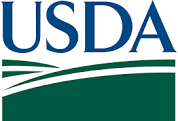On Wednesday, USDA Agriculture Secretary Tom Vilsack provided a preview of the Organic Livestock and Poultry Standards final rule which establishes standards for organic livestock and poultry production, levels the playing field for organic farmers, ranchers, and businesses, and promotes markets for their products while providing consumers with more transparency, according to the USDA.
"USDA is creating a fairer, more competitive, and transparent food system. This organic poultry and livestock standard establishes clear and strong standards that will increase the consistency of animal welfare practices in organic production and in how these practices are enforced," said Vilsack. "Competitive markets help deliver greater value to all producers, regardless of size."
This change was driven by strong interest from consumers and the organic industry: USDA received more than 40,000 written comments regarding its organic standards from industry stakeholders and consumers.
The final rule outlines more consistent standards for six key areas, including:
• Outdoor space requirements: The rule sets minimum outdoor space requirements for organic poultry and requires ready access to the outdoors.
• Indoor and outdoor living conditions: Shelters must have sufficient space for livestock to lie down, stand up, turn around, fully stretch their limbs or wings, and express natural behaviors, such as rooting in pigs and scratching in chickens.
• Poultry stocking densities: The rule sets specific requirements for indoor and outdoor stocking densities to align with advisory board recommendations, third-party animal welfare standards, and public comments from organic stakeholders.
• Preventative health care practices: Producers must maintain preventative health care practices that include sufficient nutrition and comprehensive parasite prevention plans; additionally, animals must be treated with allowed medicines to minimize pain, stress, and suffering.
• Physical alterations and euthanasia: Physical alterations are permitted only for identification purposes or the safety of the animals, and certain alterations are prohibited altogether; regulations are added on how and when alterations and euthanasia occur.
• Transport, handling, and slaughter: Operations must describe how organic management and animal welfare will be maintained for transport that exceeds eight hours; animals must be fit for transport.
In partnership with USDA-accredited certifiers, USDA’s National Organic Program will oversee the implementation of and enforce compliance with these new, more consistent standards to support the growth of the organic market.
The rule supports ongoing consumer confidence and trust in the USDA organic seal by better aligning the organic standards with consumers’ expectations for animal welfare.
Related: Report: Excessive Lead, Cadmium Found in Chocolate; Grocery Outlet Shares ESG Report

